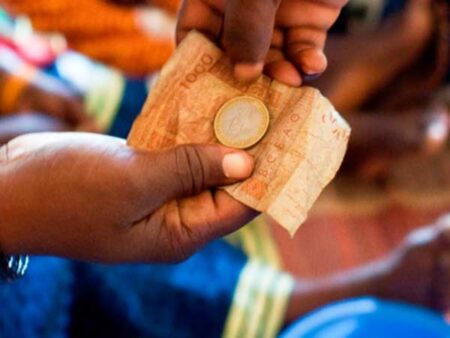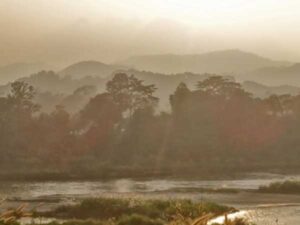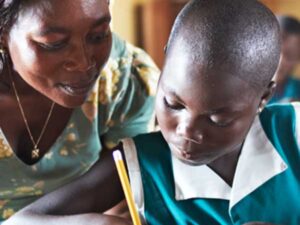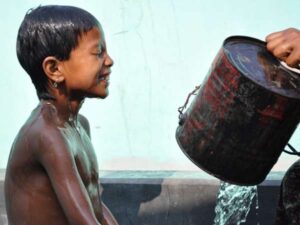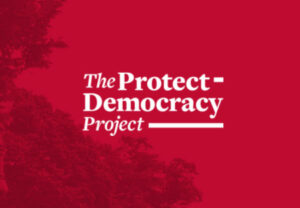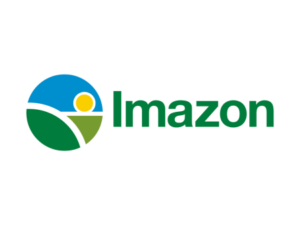Kashf Foundation supports women entrepreneurs in Pakistan with financial services, as well as business development support.
Roshaneh Zafar of Kashf Foundation spoke with Priyanka Shankar on February 15, 2023. Click here to read the full conversation with insights highlighted.
Priyanka Shakar: Today we will talk about the problems you’re addressing, the impact you’re creating, and lessons you’ve learned. It would be great if you could introduce yourself based on how you’d like all of us to know you.
Roshaneh Zafar: My name is Roshaneh Zafar and I’m the founder and managing director of Kashf Foundation, which is Pakistan’s first specialized microfinance institution set up in 1996 to provide financial services, in particular loans, insurance and training and development services to women entrepreneurs across the country. Currently, we are the fifth-largest microfinance institution in Pakistan, but the largest when it comes to access to women.
Priyanka Shakar: Is there a specific problem that you’re addressing that made you start this organization?
Roshaneh Zafar: I’m an economist by training and I worked for the World Bank, and that raised a lot of questions in my mind when it came to looking at the impact of development in terms of gender. It was particularly manifested by the fact that Pakistan continues to disinvest or rather, not invest, in women and girls. This is where the problem emanated, and my search was to really find a solution which could provide women with resources and the ability to influence decision making within their homes and their communities. I met with Dr. Yunus, and that is where I learned about microfinance, where the centerpiece is women taking loans and making financial decisions and investing in their businesses, which then provides them the bandwidth to influence decision making within the household. The problem on a larger issue is gender inequity, and in a microcosmic way is the lack of women’s decision making within households.
Priyanka Shakar: What makes your approach distinctive?
Roshaneh Zafar: Unlike other transactional based microfinance organizations, our work is transformational. We look at the woman entrepreneur at the center of our work, and we look at all the challenges she faces. The first challenge is what business should she have? So we provide business advisory services to her to help her develop her business plans, and we look at her capacity and her entrepreneurial background to advise her on what she should do.
Our frontline staff has a lot of information regarding the community and the kind of businesses that women can run. The first piece is really speaking to the entrepreneur and understanding her needs and her business. If she has an existing need, then our advice is of a different kind. But if it’s a business that she wants to start, we give her business startup advice as well.
In addition to that, we look at the financing that she needs. We provide her financing at her doorstep. A lot of women are scared of going to banks or formal financial institutions, so Kashf staff are raison d’etres to make the transaction easier for women. Our staff goes to them, we have digital solutions available, so we take all the data up there in the household. It’s a private and confidential kind of relationship, and it’s built on trust.
The second piece is then we look at the household, and we see the engagement that needs to be done within the household. We run gender trainings for men, in particular for the spouses of our clients, to help them understand the important role that women have to play when it comes to the household economy and decision-making, and the fact that they are all responsible for unpaid care and other aspects of household dynamics.
We also work with the entrepreneur over the 12 months that we’re engaged with them. We do financial education training for women. The other thing we do is maternal health and reproductive health training for the women. One of the biggest challenges women entrepreneurs face is the triple burden they bear. If they’re running a business, they’re also running a home, and they’re looking after their families. We try to engage with them to help them improve healthcare practices within their homes.
On the longer term threshold, we’ve talked about the immediate need, which is the business, the financing need, the loan, the transformational aspect of her skills and her family dynamics, and the fourth aspect is long-term where we provide insurance services to the client as well. Whether it’s life insurance or health insurance or livestock insurance if she’s working in the livestock sector. We’ve tried to look at the entire bandwidth of challenges that a low-income household where a woman is wanting to run a business faces, and in particular the kind of patriarchal challenges women face and how we can overcome them.
The transaction is easy, you give a loan and you forget about it. But when you want to change dynamics, then you really have to do several steps upwards.
Priyanka Shakar: Could you give us an example of a specific case which was really challenging, and then take us through these conversations you’ve had with the woman and her family? Was there any lesson that you picked up after this experience with a specific case?
Roshaneh Zafar: I keep going into the field because without understanding the needs and the context of the entrepreneurs that we fund, we would never be able to design the products or the interventions. Very recently, Covid was one of the biggest challenges for women entrepreneurs. For those who provide essential services or run essential businesses, for example a grocery store, even in a pandemic it had demand. But when it came to a beauty salon or a school, those were the kind of businesses that actually shut down and were very deeply affected. Women are the ones that tend to run beauty salons and schools in low-income communities. So what did the women do in these circumstances? How did they cope?
One client of mine works in a small rural community, and she runs a very innovative or exceptional business, she makes jewelry. She used to live with her family in a small city, and that’s where her entire family was involved in the art of jewelry making. This is cosmetic jewelry, not real jewelry, not gold jewelry. She learned that skill intergenerationally. The skill learning was not the challenge because it was there all around her, but when she got married and moved into the rural community, there was no support network for her to start a business. She had the creativity and the design knowledge and the need because she and her husband had four children consecutively, and she married very young. She was 20 years old when she got married. Then her husband had an accident and stopped working, so the entire onus of running the homestead and managing the household finances fell on her. The only skill she had was this particular jewelry making.
She was contacted by a Kashf business development officer, that’s our frontline officer, and they engaged with her and told her about taking money, if she had a business idea we could support her. So the journey began. Initially it was very difficult for her to go out of her community to buy material. One of the biggest challenges women face in communities like ours is mobility. How do they get from point A to point B?
Her son was 10 years old, but because he was a boy, she took him along, sat on the bus and went to the next city to buy the materials she needed after getting the loan from us. Initially the community was all right that she took her son with her, that there was a “man” who went with her. But over time, as she gained confidence, she didn’t rely on her son because she wanted to send him to school, she didn’t want to keep him away, and she had gained the confidence. Then it became very difficult for her to send orders back because most of the demand for this product was in the cities.
She contacted her brother, who agreed to take her products into the city, and gradually she started selling. However, then came Covid, and she lost all contacts and had to start over again. We ran a training at Kashf, we called it Not Letting Covid Happen to My Business, to help women use Facebook, WhatsApp, and other online ways to market their products.
The last time I visited her I asked, “What happened? How did your business survive?” She said, “The training that I got from Kashf on how to use social media to get my products across. Now, where I was getting, let’s say five orders in the week, I’m getting 10 orders in the week, and almost 60% of them are coming online.” These are the kinds of challenges that women face. She also mentioned to me how the community reacted to her business. If she had bought a goat or a cow, that would’ve been an acceptable business because many women run that. But because her business was unusual, everybody doubted her, and there were lots of naysayers who said, “She’s not a good woman because she’s leaving the environs of the community.” They started doubting her. But as her business grew and she started getting money, she was able to send her children to school and people began to respect and trust her. Her whole image in the community and her acceptance also increased.
Priyanka Shakar: It’s challenging for women to wade through patriarchal society and also be the one dealing with finances. In Pakistan there’s been the pandemic, there’s also been the floods. And like any organization, all these challenges of raising funds or not facing backlash from the government or regional authorities. How do you wade through that?
Roshaneh Zafar: The pandemic was something we had never experienced before. Floods we’ve had before, and I’ll try to separate them out. There are commonalities, but one of the first things that comes up in such situations is you have to look at the client. Because as I said, we are a transformational organization.
The first thing we did after the pandemic was we contacted all our clients to see what was happening with their incomes. Ninety percent of them said, “We have no income right now, and we don’t know what’s going to happen.” The first thing we did in the wake of the pandemic was to give our clients a one-month grace period. We said, “Okay, you don’t have to repay us the next installment. Neither do you have to pay the extra interest on that one month. We will forgo that. One month later, we are going to resume our conversations with you.” We let the repayments stay static, but we continued our contact with our clients over the phone because a lot of our work is digital now.
We had the information, even though our staff was not allowed to come to the branches, they had the digital information regarding the clients with them. They contacted them and contact was very, very important. We started asking them one month later, “What would work for you? Do you want a three-month grace period and other rescheduling? How would it work?” I must tell you that 90% of the clients said they don’t want a grace period, a further rescheduling. They will start repaying because they want to get a new loan and maintain their credibility.
One of the things we’ve seen across the microfinance industry, women are not only better payers, they’re not only more credible, but the impact of a woman taking a loan is much greater than that of a man. I’m not just saying this, it is evidence backed. If you look at the kind of impact assessments that have been carried out, the women’s impact in terms of use of loan on income and savings may not be as high as a man’s, but the impact on the next generation is very big because they’re the ones who want to feed their children better. They’re the ones who want to send their children to school. They’re the ones who are saving for a rainy day. So when you combine all of that, the impact on welfare is very different for a man using the loan and a woman using the loan.
What we saw after the pandemic was that women wanted to continue repaying, and we had more than half a million clients outstanding at the time of the pandemic. Ninety five percent of them paid us back after the one-month grace period we gave them, and their businesses continued. Some of them we recapitalized with loans. We gave them top up loans so they could continue. With the pandemic our biggest concern was the client, and then of course the second concern was liquidity. How do we make sure that because the terms were changing and our money was in the market in the form of loans, how do we manage liquidity? So what we’d had done earlier given the economic turmoil that we had been engaging in, we had kept a 25% surplus in cash in investments in banks. So we were able to stem ourselves over that time.
Our investors were also very positive, and we didn’t have that kind of run on the organization, which may have happened if the trust factor was missing. Both from the clients’ angle and from the investor angle, we were able to communicate this. Then of course the government regulation also helped us. They allowed us to roll over some of the stock loans, and they made the write-off period a little more flexible so we could navigate clients who were taking more time to repay us back. It was a combination of several things.
The flood is different. The difference between Covid and the floods is Covid was a temporary lockdown on livelihoods. The pandemic seems rather surreal if you think about it. It was really about how do you manage lives versus livelihood, all governments were challenged by this. All approaches were looking at this, and we were right in the horse’s mouth when it came to dealing with livelihoods. The floods are different because it’s not just about livelihoods being temporarily closed down. It was about damage and loss: losing homes, losing your assets, losing your jobs, losing everything that you had invested in. So that’s a longer tale. Here again though, we used the same rescheduling options, the grace periods, the recapitalization, and people are coming back. We had about 43,000 households who were affected post the floods, and we’ve contacted each one of them. Almost 20% had to leave their homes. They were on the roads basically in tents. Eighty percent had partially damaged homes, so they could still stay there, but most of them lost their crops in that period. Some lost their livestock, which as you know is the major wealth investment for low-income households.
We had to pick up the pieces one by one, and it is going to take us longer than the Covid revival did. The Covid revival, within 12 months we were pretty much back on track. This is going to be an 18 to 24-month window. What we all need to do now is to look at climate resilience, adaptation, what microfinance can do in that. The advantage of microfinance is that we have aggregation. We are out there in communities, and we have a huge network. I was just in Bangladesh last week. The kind of climate resilience that we’ve seen in Bangladesh as a result of floods and cyclones, we can learn a lot from them.
We have to get donors to help us give the grants to build better homesteads, better homes that are climate resilient. These households will not be able to pay fully for these structures so we need to all sit down and come up with tools. Sanitation loans can be another way. We’re also thinking of setting up health clinics across our network because one of the biggest gaps that’s there is the healthcare delivery system.
We have a health insurance system which allows you to use the private sector healthcare, but for immediate healthcare, one of the things we saw in Bangladesh was this amazing organization that’s got health clinics in the branches. We want to do that. This is a donor-led program and is important for flood prone areas, so that you can prepare and make people more resilient health wise to deal with displacements at times of flooding.
Priyanka Shakar: How are you measuring your own success and impact?
Roshaneh Zafar: We have multiple interventions. The first is the easier one, has it really made a difference? Has it not made a difference? The RCTs [randomized controlled trials] have shown that microfinance doesn’t make a difference, that there is no correlation between reduction in poverty and increase in incomes that can be attributed to microfinance. So that’s one stream of thought.
Then there is the other stream of thought that we belong to, that microfinance has to be seen in a longitudinal manner. It’s not going to be a 24-month journey like the RCTs are. It’s hand-holding for several years, maybe three plus years, after which you’ll start to see impact. If it’s women focused, it has a great impact.
The measures we use are several. One of the first is obviously income. Has income grown? We compare this to newcomers who just joined our microfinance program and to mature clients who’ve been with us for more than three years. We try to measure the difference between them, and the impact assessments show that, once you have a random sample, it is statistically significant. People who’ve been accessing microfinance for longer will have greater incomes, greater savings, greater consumption, and so forth. The quantitative impact is on the business incomes and the capacity of the business to grow. There is also an empowerment impact so we also look at confidence building. We look at decision making in the household. We look at the incidence of violence against women. We have a whole bandwidth of economic indicators and social indicators. Every two years we undertake an impact assessment.
In addition to that, we also assess every two years the interventions we have on the microfinance plus side, whether it’s the insurance, what difference did it make in the lives of the clients, and what impact did it have on welfare? I have an interesting statistic to share with you on insurance. When we started the health insurance program, one of the largest in Pakistan today that covers over 3.6 million individuals across the country, we were agnostic. Most of the products we design are gender intentional, which means we look at the women entrepreneur and the woman in the low-income setup, and we design products keeping her in view. All our research and focus is on that.
When we are designing health insurance, obviously poverty affects everyone. This was an overarching project and we didn’t have a gender component as such. The underlying population is 50% women and 50% men. In our health insurance, they’re 50% boys and men and 50% girls and women so we thought the claim ratio would also be the same. Fifty percent would go to men and 50% would go to women. Over time we discovered that 67% of the claims were being used by women. We were a little surprised by this and thought, “Okay, let’s go and research this.”
When we went in and talked to the women clients, the first thing we heard from them was that, “Oh, now that we don’t have to pay for this health expenditure, I had been delaying my elective operation for a long time. So now that I can use this without dipping into family income, I will avail this service.” What was happening was women who were not using healthcare prior to this were now more likely to use it because it was not linked to family resources.
Priyanka Shakar: Microfinance is often catered a lot to women entrepreneurs. What about people from the LGBTQ community, is that something you are looking into? Because for them, access could be challenging with countries’ rules.
Roshaneh Zafar: We have a trans program, not a conscious one, but if you are trans you can apply to Kashf. About 10 years ago or more, the transgender community in Pakistan couldn’t get national identity cards, which meant they did not have a footprint, no identity in the country. But now that the government actually instituted that, that ID card allows them to open bank accounts, allows them to get access to loans, allows them to go to school and university and so on. We haven’t done a special program for them, but maybe in the future we will. Our employment policy also encourages them to apply to work with us. We haven’t had anyone so far. But these are things that we may be working on in the future for sure.
Priyanka Shakar: Is there anything else you’d like to add that I haven’t asked you or touched upon?
Roshaneh Zafar: I’d just like to say that it’s been wonderful being a Skoll partner for all these years. We were one of the first ones in Pakistan and one of the earliest Skoll awardees. We’ve had floods twice, we’ve had earthquakes. Every time we’ve had support from Skoll, and I’d just like to acknowledge that. To be part of this Skoll community is also very exciting and always has been.
Click here to read the full conversation with insights highlighted.
Priyanka Shankar is an independent journalist currently based in Brussels. She mainly covers stories about human rights, migration and Europe’s relations with Asia. Outside a newsroom you can find her rambling along mountains or scuba diving.
* This interview has been edited and condensed.
Learn about other social change organizations working in Pakistan.

